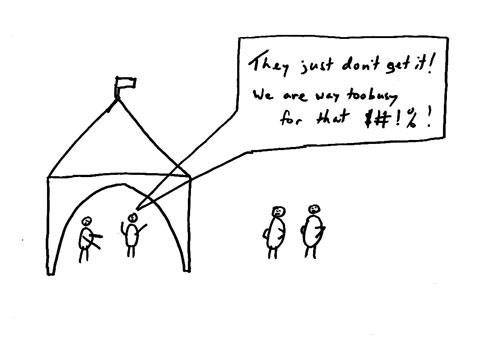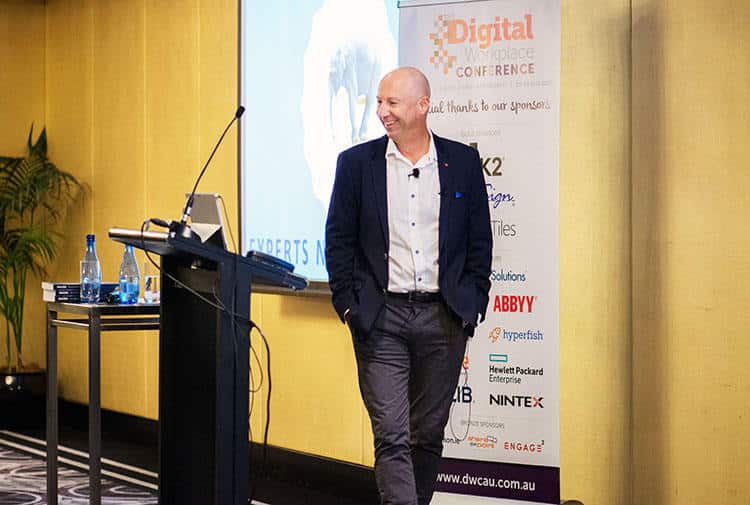Why The Use Of Imagery To Influence Is Often Overlooked By Leaders And Why It Shouldn’t Be

The old saying that a picture is worth a thousand words has survived more than a century after first appearing in newspapers in the early twentieth century. Why then don’t we use imagery more to influence?
We are happy to write a thousand words for a reason. It could be anything from a business case, a project update or an incident report. Yet, so often, all we use are words. Sometimes, because the subject includes lots of numbers we include a chart. Nice, but only a fraction of the power of imagery.
We imagine
One of the core rules of influencing is to stand in the shoes of those you wish to influence. So you understand them. Use of imagery is for the opposite reason. It is so they understand you!
Here is an example. Let’s say I told you I drove to work today. If you were meeting me for the first time you would probably picture a vehicle based on how I look — that is, your initial perceptions of me. If I was wearing a suit you might imagine me in a nice sedan. If it was an Armani suit, you might picture me in a high-end vehicle, maybe a Ferrari if I looked swish enough or a Rolls-Royce if I was particularly affluent and distinguished looking. If I wore a high-visibility vest and work boots you might imagine a utility vehicle.
That is a simple example of someone painting a mental picture. As a CEO you are often influencing people about complex subjects or to gain buy-in to new ideas. If you have not painted a picture for them, they will paint one for themselves. They are constantly imagining.
If you don’t paint them a picture, they will paint their own. And it may be markedly different.
Explaining complexity
Pictures can capture complex meaning in a snapshot. One of my favourites is the one shown here. I use it to explain that if you are not inside the tent, you are not seen as being on the same team and you are not given access, time or are not listened to. The drawing can be used to help everyone from sales staff to the HR department.
Stirring emotions
Imagery also can be used to stir emotion. It is why charities mail photographs of those they are wanting to help when they are appealing for donations.
Why is this important? Because our emotions heavily influence our decisions. In fact, if someone is emotionally attached to an outcome, unless you can shift them you cannot convince them with logic. You have to shift their emotions.
Being memorable
Images, especially if hand drawn, help us remember things. The act of drawing has an impact on the brain. Often quoted research has shown that the retention rate for information presented without pictures or diagrams is 10 per cent after three days, while for the same information with pictures or diagrams, the retention rate increases to a whopping 65 per cent — six and a half times that of the information-only approach.
This is important for two reasons. Firstly, the person you are wishing to persuade can recall and therefore apply your advice more easily. Secondly, often a person you need to persuade to take a course of action will have to persuade others. A team leader, for example, may need to persuade their team to change course because of your advice. With visual reference points, they are more easily able to brief their team.
But I can’t draw
As evidenced by my drawing of the tent scene, I can’t draw either. However, research also shows that when it comes to drawing diagrams, the quality of the diagram has no effect on a person’s ability to remember it.[1] So I scratch up diagrams as best I can and then watch as people engage with them. Sometimes nodding profusely. Sometimes pointing at a part of the diagram while articulating a point or asking a question.
And here is the final lesson. Imagery helps facilitate the conversation and your best influencing happens during a conversation.
[i] Jeffrey D. Wammes, Melissa E. Meade & Myra A. Fernandes, The drawing effect: Evidence for reliable and robust memory benefits in free recall. University of Waterloo. April 2016. The 2018 CEOWORLD Magazine University Rankings ranked the university 220th in the world and eighth in Canada.
Have you read?
# You Don’t Need To Be A Rock Star To Be An Effective Leader by Bryan Whitefield.
Add CEOWORLD magazine to your Google News feed.
Follow CEOWORLD magazine headlines on: Google News, LinkedIn, Twitter, and Facebook.
This report/news/ranking/statistics has been prepared only for general guidance on matters of interest and does not constitute professional advice. You should not act upon the information contained in this publication without obtaining specific professional advice. No representation or warranty (express or implied) is given as to the accuracy or completeness of the information contained in this publication, and, to the extent permitted by law, CEOWORLD magazine does not accept or assume any liability, responsibility or duty of care for any consequences of you or anyone else acting, or refraining to act, in reliance on the information contained in this publication or for any decision based on it.
Copyright 2024 The CEOWORLD magazine. All rights reserved. This material (and any extract from it) must not be copied, redistributed or placed on any website, without CEOWORLD magazine' prior written consent. For media queries, please contact: info@ceoworld.biz
SUBSCRIBE NEWSLETTER










